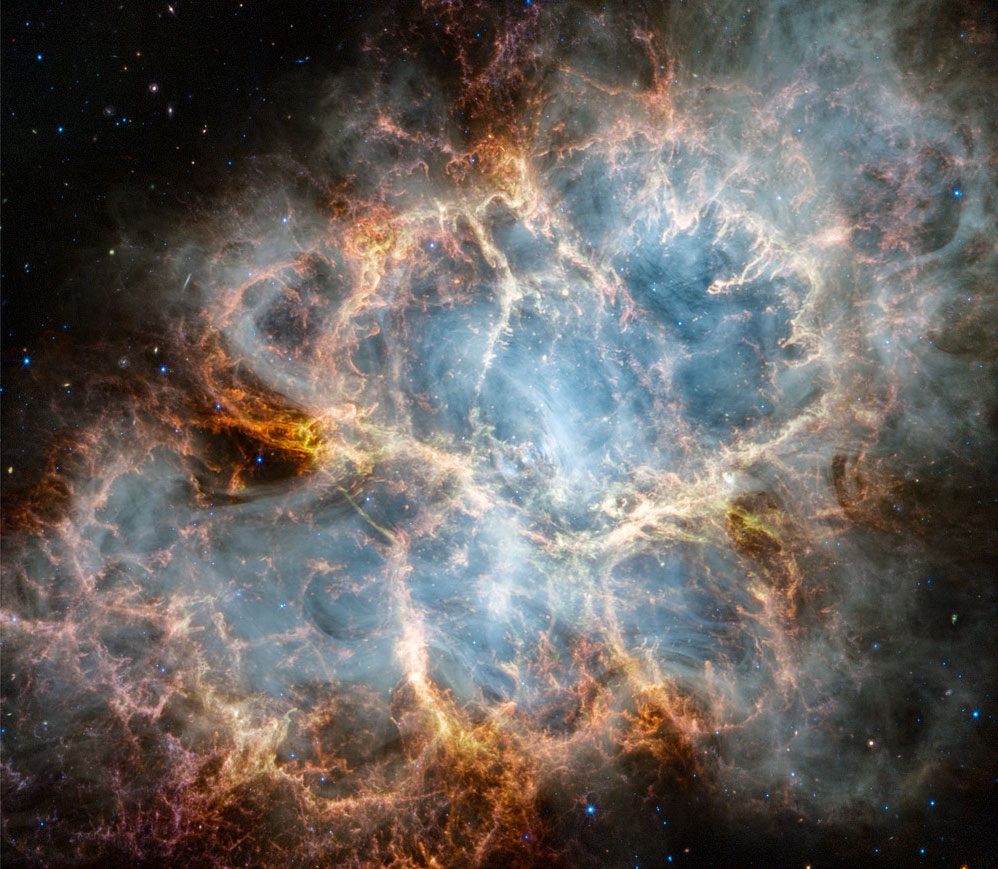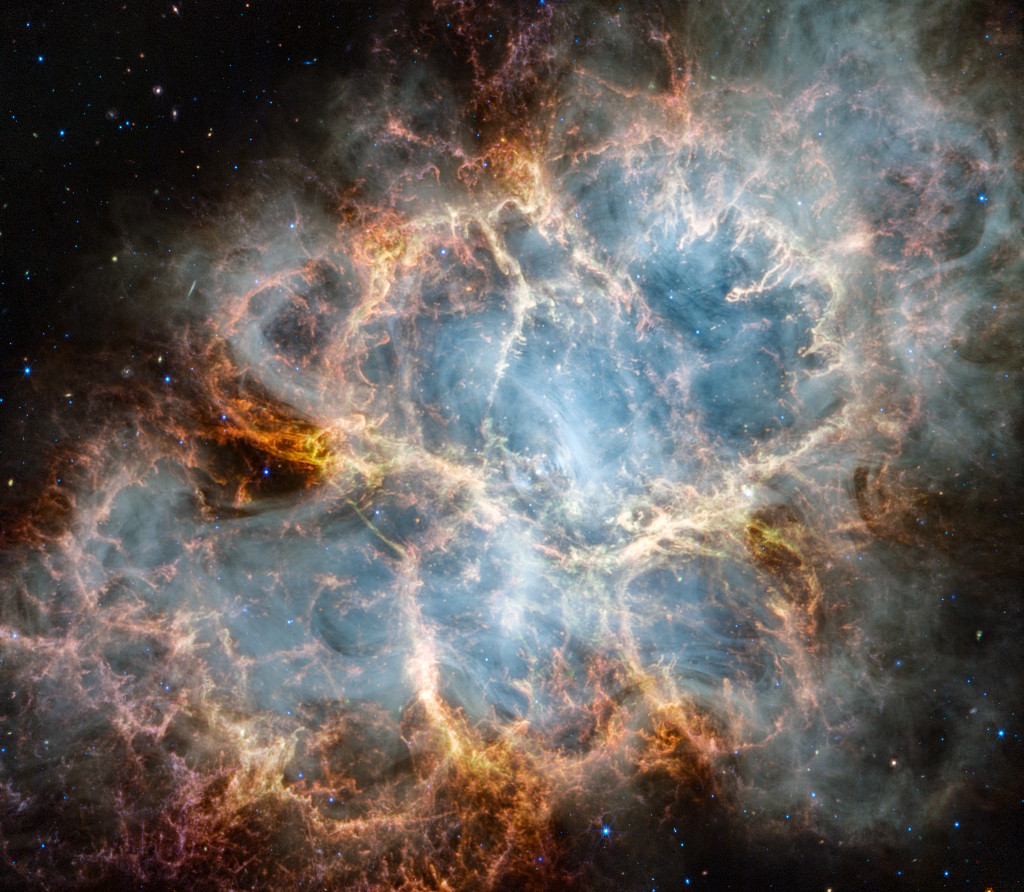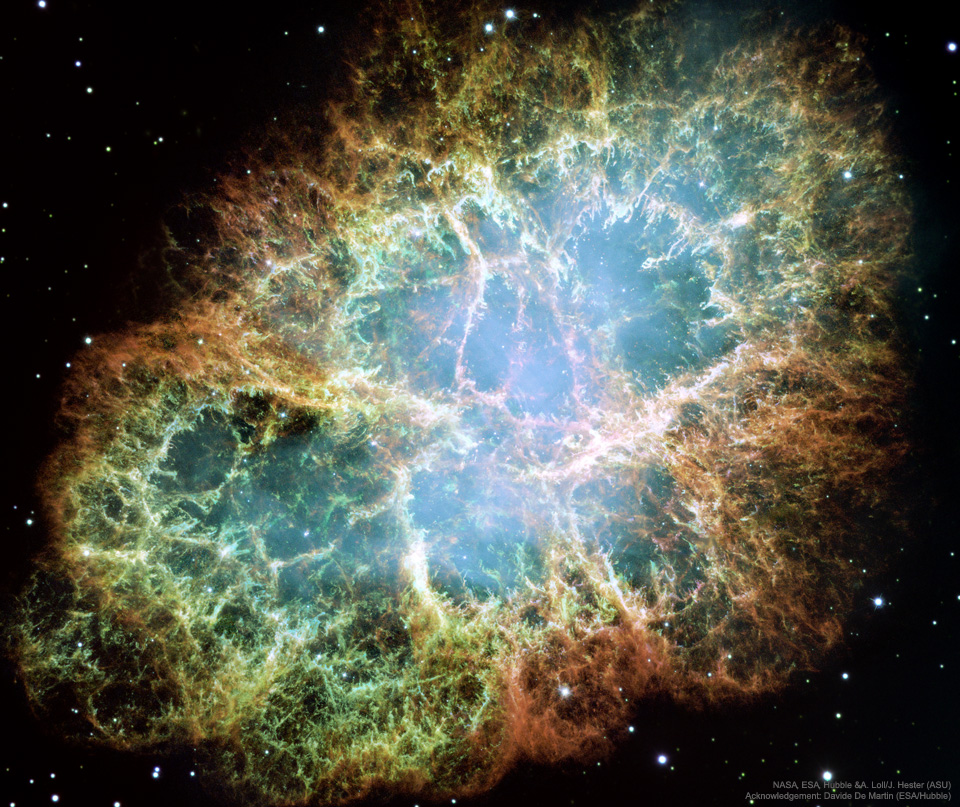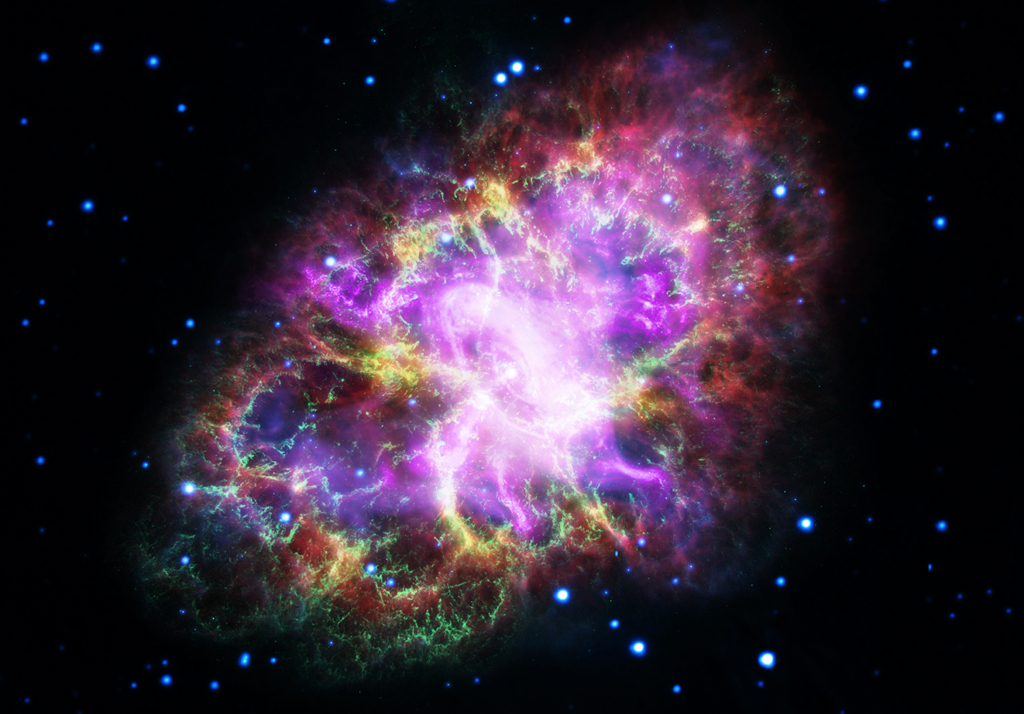蟹状星云的旋转脉冲星
The featured image shows the center of the Crab Nebula in colors mapped to Hubble, Chandra, and Spitzer space telescopes. The Crab pulsar appears in the center surrounded by a spinning disk. Please see the explanation for more detailed information.
特色图片展示了蟹状星云中心的颜色,这些颜色映射自哈勃、钱德拉和斯皮策太空望远镜。蟹状星云脉冲星位于中心,周围环绕着一个旋转的盘面。有关更多详细信息,请参阅说明。










